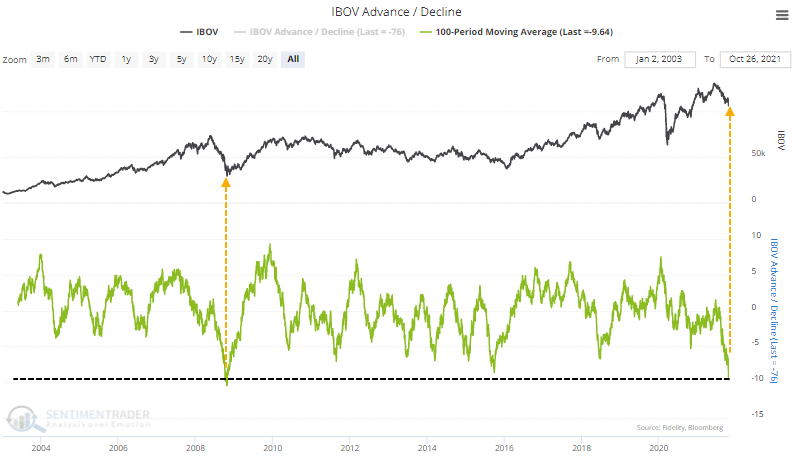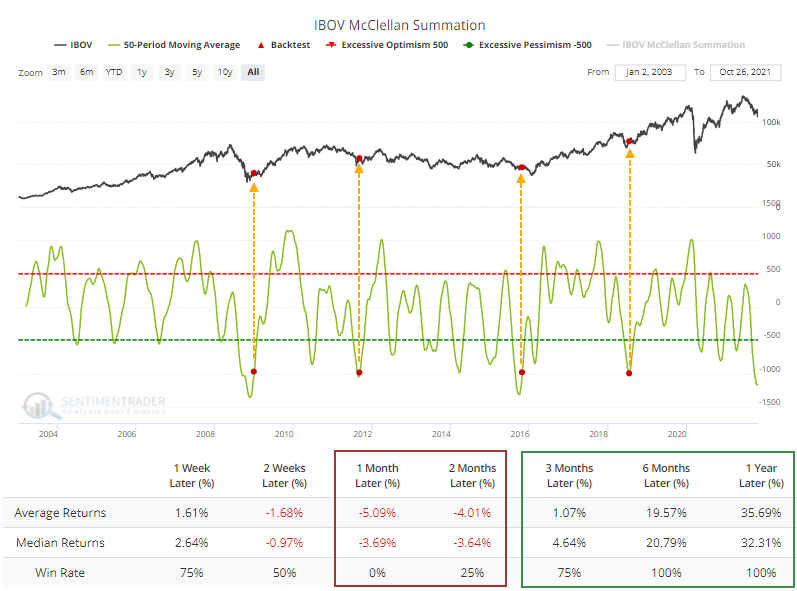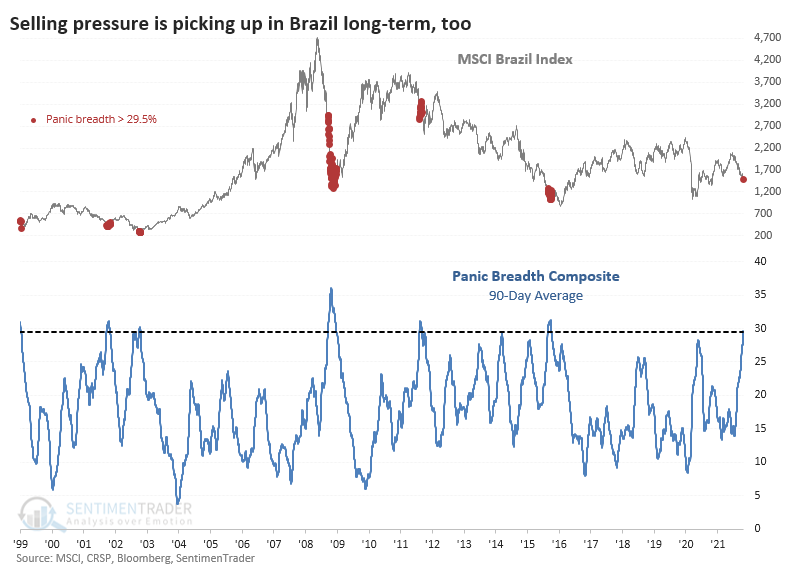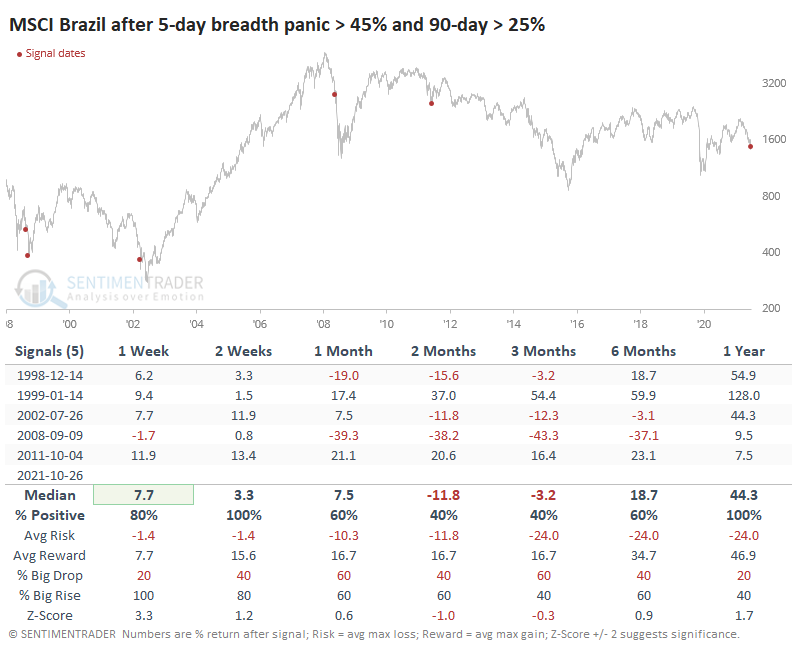Brazil Nears Panic Amid Historic Selling Pressure

Brazil is a mess, and investors are panicking.
In recent days, selling pressure has been heavy enough and broad enough to hint at indiscriminate selling. Investors have been focused less on positives like plunging Covid cases and surging demand for commodities, and more on negatives like political turmoil and rising interest rates.
Per Bloomberg:
"Local assets have tumbled in recent days as President Jair Bolsonaro's administration seeks ways to boost spending ahead of next year's election and bypass fiscal rules meant to keep budgets in check."
And CNBC:
"The first problem is a slowdown in China that will likely have a knock-on effect on Brazil as one of its largest trading and export partners."
HISTORICALLY POOR BREADTH
Breadth metrics are horrid. So many stocks on the Ibovespa exchange have been declining consistently that the Cumulative Advance/Decline Line has plunged to the 2nd-lowest level in 15 years.

On an average day during the past 100 sessions, 10 more stocks have declined than advanced. That's an abysmal stretch that few sectors or indexes have matched in the past 20 years. For the Ibovespa, it's the 2nd-lowest reading since 1998, barely exceeded by late October 2008.

Such poor internal momentum has pushed the McClellan Summation Index for Brazilian stocks below -1000 and kept it there for most of the past few months. It's been below -975 for 56 trading days, eclipsed only by the 60 days it spent below that threshold in November 2008.
After other times a 50-day average of the Summation Index fell below -1000 and started to curl higher, the Ibovespa did exceedingly well over the medium- to long-term after suffering shorter-term volatility. The Backtest Engine shows an average gain of 36% over the next year. It hasn't triggered yet; momentum needs to stop sliding first.

SELLING PRESSURE SHOWS NEAR-PANIC
Like we did with the Hang Seng and Industrials sector in September, we can calculate a Breadth Panic model that aggregates the kinds of internal measures which spike when investors sell everything at once.
Over the past week, that has averaged 45%, ranking in the top 3% of all days since 1999. It has spiked even higher during all-out crashes, so there is room for it to get more extreme if things truly collapse.

But it's not just the past week. Over the last 90 days, the Breadth Panic has risen to the highest level in 7 years.

There have only been a handful of times when both the 5-day and 90-day averages were comparable to what we're seeing now.

These were not automatic buy signals. Even though the MSCI Brazil Index (on which the EWZ fund is based) rallied each time over the next year, the drawdowns on a couple of them were horrendous. And with a tiny sample size, such variability makes the signal even more unreliable than it would otherwise be.
There are two things to watch for a better potential opportunity:
- Outright panic that pushes 50% or more of stocks to new lows (it reached just over 30% last week)
- Enough of a recovery to stop the McClellan Summation Index from falling and curl decisively higher
Neither one guarantees a positive return, especially in the weeks ahead. Conditions like that tend to coincide with high volatility over a multi-week to multi-month time frame. But over the next 6-12 months, either condition should lead to significantly higher prices.

